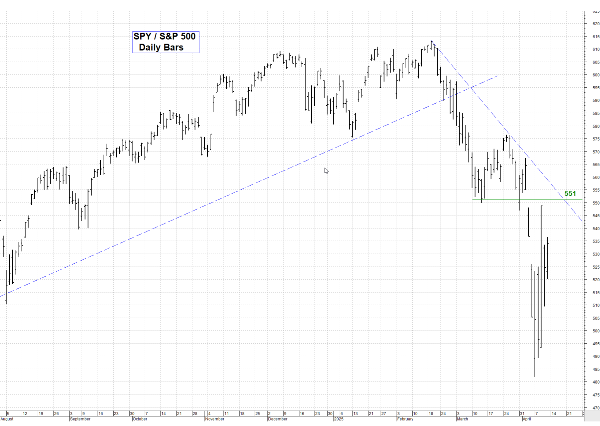Introduction
The lumber industry plays a crucial role in supporting various sectors, including construction, packaging, and manufacturing, by supplying essential materials for infrastructure and consumer goods. As global demand for lumber rises, driven by population growth and housing development, the industry has experienced significant price fluctuations and market growth. This dynamic environment has made lumber stocks an attractive option for investors seeking to capitalize on industry trends and long-term opportunities. By investing in lumber stocks, individuals can gain exposure to a vital sector that contributes to economic growth and offers potential for substantial returns.
Factors Influencing Lumber Stock Performance
Lumber stock performance is heavily influenced by economic factors, including housing demand, infrastructure development, and global trade dynamics. As construction projects expand and housing markets grow, the need for lumber products increases, driving demand and positively impacting stock prices. Similarly, international trade plays a critical role in shaping the availability and pricing of lumber, with shifts in export-import balances directly affecting market performance. Investors keen on lumber stocks should pay close attention to these economic drivers as they can signal growth opportunities or potential volatility in the market.
Environmental considerations also play a significant role in influencing lumber stock trends. Sustainability practices, climate change, and government regulations regarding forest management are key factors that impact production and investment potential. For example, companies that adopt eco-friendly practices and align with stringent environmental standards often gain favor in the market. Additionally, timber and lumber prices fluctuate due to factors such as supply chain disruptions, changes in consumer preferences, and shifts in demand for wood-based products. Understanding these market trends and environmental challenges is essential for investors to make informed decisions and capitalize on the growing interest in sustainable and resilient lumber production.
Top Lumber Stocks to Watch
Weyerhaeuser Co. (WY): A leading timberland owner and operator, Weyerhaeuser specializes in sustainable forestry and wood products, making it a top choice for investors seeking long-term growth and dividends.
Boise Cascade Co. (BCC): Known for its wood products and building materials, Boise Cascade benefits from steady demand in the construction and home improvement sectors.
West Fraser Timber Co. Ltd. (WFG): This Canadian company is a major producer of lumber, plywood, and other wood-based products, with a strong focus on sustainability and innovation.
UFP Industries Inc. (UFPI): A global manufacturer of treated lumber products, UFP Industries serves diverse markets, including construction, packaging, and industrial applications.
International Paper Co. (IP): While primarily focused on paper and packaging, International Paper also has significant timberland holdings, offering exposure to the broader wood products market.
These companies represent a mix of timber production, processing, and distribution, providing investors with diverse opportunities to capitalize on the growing demand for wood-based products.
Benefits of Investing in Lumber Stocks
One of the key advantages of investing in lumber stocks is the opportunity for portfolio diversification. By including natural resources such as timber in your investments, you gain exposure to a tangible and resilient asset class that often moves independently of traditional financial markets. This diversification can help reduce overall portfolio risk and provide a buffer against economic downturns, making lumber stocks an attractive addition for both novice and seasoned investors.
Lumber stocks also offer the potential for long-term growth, driven by increasing global demand for wood-based products. As urbanization accelerates and housing markets expand, the demand for construction materials and packaging continues to rise. Additionally, the shift toward eco-friendly solutions has increased the need for renewable resources like timber, providing lumber companies with significant opportunities for growth. For investors seeking steady gains over time, lumber stocks represent a promising avenue to capitalize on these market trends.
Risks and Challenges of Lumber Stock Investment
While lumber stocks present lucrative opportunities, they are not without risks. Volatility in lumber prices, often caused by supply chain issues, economic downturns, or sudden changes in market demand, can impact stock performance. These fluctuations require investors to adopt a long-term perspective and prepare for potential short-term losses. Additionally, natural events such as wildfires, pests, and diseases pose significant challenges, as they can reduce timber yields and disrupt production.
Regulatory changes and environmental sustainability concerns further complicate lumber stock investment. New policies aimed at promoting responsible forestry practices can increase operational costs for companies. Additionally, climate change introduces long-term risks, including shifts in growth patterns and resource availability. Investors must navigate these challenges carefully, staying informed and considering the broader implications of environmental and regulatory dynamics on the lumber industry.
Tips for Choosing Lumber Stocks
When evaluating lumber stocks, conducting thorough research on a company’s financial health, market position, and sustainability practices is essential. Reviewing balance sheets, profit margins, and growth strategies can help determine whether a company is well-positioned to deliver consistent returns. Companies that prioritize environmental stewardship and align with sustainability certifications are particularly appealing, as they demonstrate resilience and alignment with market trends.
Diversification remains a cornerstone of successful investing, and this applies to lumber stocks as well. Rather than concentrating investments in one company or segment of the industry, spreading your holdings across multiple stocks can help balance risk and reward. Using stock screening tools to identify top-performing lumber companies based on financial metrics, industry presence, and market trends is a practical approach to building a well-rounded portfolio. By taking these steps, investors can make informed decisions and maximize the benefits of investing in lumber stocks.
Final Thoughts
Investing in lumber stocks offers a unique opportunity to diversify portfolios, capitalize on long-term growth potential, and benefit from steady income generation. The rising global demand for sustainable wood-based products, driven by construction, packaging, and environmental trends, highlights the promising future of this asset class. While there are inherent risks such as market volatility, environmental challenges, and regulatory changes, informed decision-making and thorough research can help mitigate these obstacles.
By understanding the benefits, addressing the risks, and employing effective strategies like diversification and sustainability-focused analysis, investors can navigate the complexities of the lumber industry and maximize their returns. Lumber stocks not only represent a financial opportunity but also allow investors to align with sustainability practices and contribute to the responsible utilization of natural resources. With thoughtful planning and strategic choices, lumber stocks can be a valuable addition to any investment portfolio.






























Introduction
The lumber industry plays a crucial role in supporting various sectors, including construction, packaging, and manufacturing, by supplying essential materials for infrastructure and consumer goods. As global demand for lumber rises, driven by population growth and housing development, the industry has experienced significant price fluctuations and market growth. This dynamic environment has made lumber stocks an attractive option for investors seeking to capitalize on industry trends and long-term opportunities. By investing in lumber stocks, individuals can gain exposure to a vital sector that contributes to economic growth and offers potential for substantial returns.
Factors Influencing Lumber Stock Performance
Lumber stock performance is heavily influenced by economic factors, including housing demand, infrastructure development, and global trade dynamics. As construction projects expand and housing markets grow, the need for lumber products increases, driving demand and positively impacting stock prices. Similarly, international trade plays a critical role in shaping the availability and pricing of lumber, with shifts in export-import balances directly affecting market performance. Investors keen on lumber stocks should pay close attention to these economic drivers as they can signal growth opportunities or potential volatility in the market.
Environmental considerations also play a significant role in influencing lumber stock trends. Sustainability practices, climate change, and government regulations regarding forest management are key factors that impact production and investment potential. For example, companies that adopt eco-friendly practices and align with stringent environmental standards often gain favor in the market. Additionally, timber and lumber prices fluctuate due to factors such as supply chain disruptions, changes in consumer preferences, and shifts in demand for wood-based products. Understanding these market trends and environmental challenges is essential for investors to make informed decisions and capitalize on the growing interest in sustainable and resilient lumber production.
Top Lumber Stocks to Watch
Weyerhaeuser Co. (WY): A leading timberland owner and operator, Weyerhaeuser specializes in sustainable forestry and wood products, making it a top choice for investors seeking long-term growth and dividends.
Boise Cascade Co. (BCC): Known for its wood products and building materials, Boise Cascade benefits from steady demand in the construction and home improvement sectors.
West Fraser Timber Co. Ltd. (WFG): This Canadian company is a major producer of lumber, plywood, and other wood-based products, with a strong focus on sustainability and innovation.
UFP Industries Inc. (UFPI): A global manufacturer of treated lumber products, UFP Industries serves diverse markets, including construction, packaging, and industrial applications.
International Paper Co. (IP): While primarily focused on paper and packaging, International Paper also has significant timberland holdings, offering exposure to the broader wood products market.
These companies represent a mix of timber production, processing, and distribution, providing investors with diverse opportunities to capitalize on the growing demand for wood-based products.
Benefits of Investing in Lumber Stocks
One of the key advantages of investing in lumber stocks is the opportunity for portfolio diversification. By including natural resources such as timber in your investments, you gain exposure to a tangible and resilient asset class that often moves independently of traditional financial markets. This diversification can help reduce overall portfolio risk and provide a buffer against economic downturns, making lumber stocks an attractive addition for both novice and seasoned investors.
Lumber stocks also offer the potential for long-term growth, driven by increasing global demand for wood-based products. As urbanization accelerates and housing markets expand, the demand for construction materials and packaging continues to rise. Additionally, the shift toward eco-friendly solutions has increased the need for renewable resources like timber, providing lumber companies with significant opportunities for growth. For investors seeking steady gains over time, lumber stocks represent a promising avenue to capitalize on these market trends.
Risks and Challenges of Lumber Stock Investment
While lumber stocks present lucrative opportunities, they are not without risks. Volatility in lumber prices, often caused by supply chain issues, economic downturns, or sudden changes in market demand, can impact stock performance. These fluctuations require investors to adopt a long-term perspective and prepare for potential short-term losses. Additionally, natural events such as wildfires, pests, and diseases pose significant challenges, as they can reduce timber yields and disrupt production.
Regulatory changes and environmental sustainability concerns further complicate lumber stock investment. New policies aimed at promoting responsible forestry practices can increase operational costs for companies. Additionally, climate change introduces long-term risks, including shifts in growth patterns and resource availability. Investors must navigate these challenges carefully, staying informed and considering the broader implications of environmental and regulatory dynamics on the lumber industry.
Tips for Choosing Lumber Stocks
When evaluating lumber stocks, conducting thorough research on a company’s financial health, market position, and sustainability practices is essential. Reviewing balance sheets, profit margins, and growth strategies can help determine whether a company is well-positioned to deliver consistent returns. Companies that prioritize environmental stewardship and align with sustainability certifications are particularly appealing, as they demonstrate resilience and alignment with market trends.
Diversification remains a cornerstone of successful investing, and this applies to lumber stocks as well. Rather than concentrating investments in one company or segment of the industry, spreading your holdings across multiple stocks can help balance risk and reward. Using stock screening tools to identify top-performing lumber companies based on financial metrics, industry presence, and market trends is a practical approach to building a well-rounded portfolio. By taking these steps, investors can make informed decisions and maximize the benefits of investing in lumber stocks.
Final Thoughts
Investing in lumber stocks offers a unique opportunity to diversify portfolios, capitalize on long-term growth potential, and benefit from steady income generation. The rising global demand for sustainable wood-based products, driven by construction, packaging, and environmental trends, highlights the promising future of this asset class. While there are inherent risks such as market volatility, environmental challenges, and regulatory changes, informed decision-making and thorough research can help mitigate these obstacles.
By understanding the benefits, addressing the risks, and employing effective strategies like diversification and sustainability-focused analysis, investors can navigate the complexities of the lumber industry and maximize their returns. Lumber stocks not only represent a financial opportunity but also allow investors to align with sustainability practices and contribute to the responsible utilization of natural resources. With thoughtful planning and strategic choices, lumber stocks can be a valuable addition to any investment portfolio.